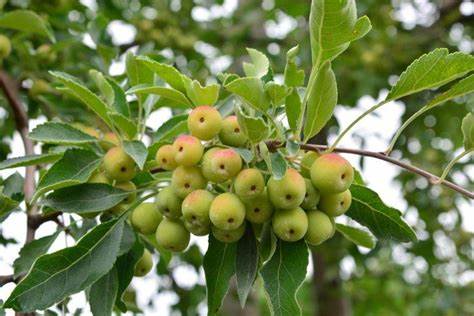Maintaining the health and strength of your trees is crucial in the lush world of orchard care. Using pesticides correctly is essential to this project since it protects your harvest from diseases and pests that could cause problems. The market is filled with a variety of tree pesticide sprayers, making it difficult to choose the best one. Let’s examine the key elements to take into account when selecting the ideal tree pesticide sprayers for your orchard, giving you the knowledge and confidence to make this important choice.
1. Size and Layout of Orchards: Customizing Solutions to Meet Your Needs
The first step in choosing the best tree pesticide sprayers is to evaluate your orchard’s dimensions and design. Think about the distance you need to traverse and any impediments that could affect your mobility, including trees, fences, or buildings. For smaller orchards with narrow rows, a backpack sprayer or handheld unit may suffice, offering precision and ease of use in confined spaces. On the other hand, sprayers attached on tractors or tow-behinds can be more advantageous for larger orchards because they can cover larger areas with more efficiency and coverage.
2. Target Insects and Illnesses: Accurate Implementation for Best Outcomes
Choosing the right tree pesticide sprayers requires you to identify the specific pests and illnesses affecting your orchard. Distinct sprayers are furnished with diverse nozzle arrangements and application techniques, each specifically designed to tackle particular insect and disease issues. For example, airblast sprayers provide complete coverage and penetration, making them perfect for addressing pests concealed in fruit trees’ canopy. However, pinpoint accuracy is provided by precision sprayers, which also minimize off-target drift and cut down on pesticide waste. Knowing the specific pest and disease profile of your orchard will help you select a sprayer that will provide optimum efficacy while providing tailored protection.
3. Formulation and Compatibility of Pesticides: Guaranteeing Maximum Effectiveness
Make sure your selected sprayer is compatible with the pesticides you plan to use. To get the best results, different formulations—such as liquids, powders, or emulsifiable concentrates—might need to be applied using particular techniques. Furthermore, certain pesticides can be abrasive or corrosive, so you’ll need to build your sprayer with materials-resistant components. To guarantee compatibility, avoid possible damage to your sprayer or compromise in pesticide performance, speak with your supplier of pesticides or the manufacturer of your equipment.

4. Application Rate and Coverage Needs: Accuracy Counts with Tree Pesticide Sprayers
Choosing the appropriate tree pesticide sprayers for your orchard requires knowing the required coverage and application rate. The amount and coverage level of pesticide required depend on various factors, including tree spacing, canopy density, and the population of the target pest. Set your sprayer’s calibration appropriately to apply the right quantity of insecticide per unit area, reducing waste and guaranteeing efficient pest management. Furthermore, take into account elements like nozzle configurations or adjustable spray booms that let you alter application patterns to suit the unique needs of your orchard.
5. Safety and Comfort of the Operator: Emphasizing Protection and Ergonomics
It is important to consider the operator’s comfort and safety while selecting tree pesticide sprayers. To lessen operator fatigue during prolonged usage, choose models with ergonomic design elements including padded straps, adjustable harnesses, and ergonomic handles. Make sure the sprayer’s design includes safety measures like chemical-resistant materials, emergency shut-off valves, and protective shields to reduce the possibility of mishaps or chemical exposure. In addition to increasing productivity, investing in operator comfort and safety also supports a sustainable and healthy work environment.
6. Upkeep and Sturdiness: Extended Life for Extended Achievement
Lastly, think about the durability and upkeep needs of the tree pesticide sprayers you select. Choose models made of premium materials that can survive the demands of orchard operations, such as stainless steel or polymers that resist corrosion. Preventative maintenance is crucial for extending the life of your sprayer and guaranteeing reliable operation. This includes cleaning, lubricating, and inspecting its components. Select models that minimize downtime and expedite maintenance with easily accessible components and user-friendly maintenance processes.
In conclusion, selecting the best pesticide sprayer for your orchard is an important choice that needs to be carefully thought out. You can choose a sprayer with confidence that suits your orchard’s specific requirements by evaluating its size and layout, identifying target pests and diseases, making sure pesticide formulations work with it, figuring out application rates and coverage requirements, putting operator comfort and safety first, and taking upkeep and durability. You’ll be ready to safeguard your orchard and produce abundant crops for many years to come if you have the correct tools.


